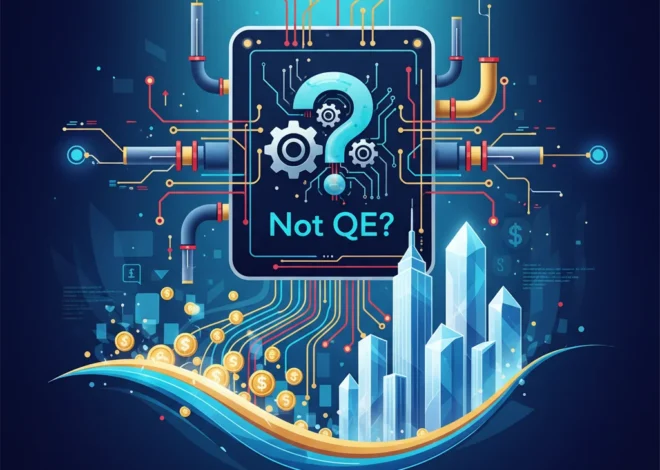
The New Global Trade Playbook: Why Regional Deals Are Reshaping Markets and Investments
The intricate dance of global trade is undergoing a seismic shift. For decades, the world moved steadily towards large, all-encompassing multilateral agreements, governed by institutions like the World Trade Organization (WTO). The guiding principle was that a rising tide of global commerce would lift all boats. However, a pivotal moment in this narrative emerged during the Trump administration’s tour of Asia, where the president signaled a clear preference for bilateral and regional trade deals over sweeping multinational pacts. This wasn’t just a change in rhetoric; it was the formalization of a new playbook, the effects of which continue to ripple through the global economy, influencing everything from corporate strategy to individual investing portfolios.
The initial signal came as the former president kicked off an Asia tour, a trip that coincided with the conclusion of tense trade talks between US and Chinese officials and a celebrated ceasefire deal between Thailand and Cambodia (source). While seemingly disparate events, they were threads in a larger tapestry: a strategic pivot away from the post-war consensus on globalized trade and towards a more nationalist, transactional approach. This shift forces business leaders, finance professionals, and investors to ask critical questions: What does this fragmentation mean for the future of international commerce? And how can one navigate the opportunities and risks in this new era of geopolitical economics?
From Global Handshakes to One-on-One Deals: Deconstructing the Policy Shift
To understand the magnitude of this change, it’s essential to appreciate the system it seeks to replace. The post-World War II economic order was built on multilateralism. Institutions like the General Agreement on Tariffs and Trade (GATT), and later the WTO, were designed to create a stable, predictable, and rules-based system for international trading. The core idea was to lower tariffs and non-tariff barriers for all members simultaneously, creating a level playing field and preventing the kind of protectionist policies that exacerbated the Great Depression.
However, by the 21st century, this model faced growing criticism. Detractors argued that multilateral deals were slow to negotiate, often diluted to the lowest common denominator, and failed to adequately address the unique challenges posed by the rise of state-capitalist economies like China. The U.S. withdrawal from the Trans-Pacific Partnership (TPP) was perhaps the most potent symbol of this changing sentiment, representing a rejection of a massive, 12-nation agreement in favor of pursuing individual deals.
The preference for bilateral or regional agreements is rooted in a different philosophy. Proponents argue they offer speed, flexibility, and the ability to tailor terms to specific national interests. A country can, in theory, negotiate a deal that protects a sensitive domestic industry while opening markets where it has a competitive advantage. The table below outlines the key distinctions between these two approaches.
Here is a comparison of the two dominant trade agreement structures:
| Feature | Multilateral Agreements (e.g., WTO) | Bilateral/Regional Agreements (e.g., USMCA) |
|---|---|---|
| Negotiation Complexity | Extremely high; requires consensus among many nations. | Lower; involves only two or a few like-minded parties. |
| Speed of Implementation | Very slow, often taking years or even decades. | Relatively fast, can be negotiated and ratified more quickly. |
| Scope and Depth | Often broad but can be shallow to achieve consensus. | Can be deeper and more targeted, addressing specific issues like digital trade or labor standards. |
| Global Impact | Creates a standardized, predictable global system. | Can create a complex “spaghetti bowl” of overlapping rules and trade diversion. |
| Dispute Resolution | Formal, centralized mechanism (e.g., WTO Appellate Body). | Ad-hoc or specific to the agreement; may lack robust enforcement. |
For businesses, this shift introduces significant complexity into supply chain management and strategic planning. For investors, it means that geopolitical risk analysis is no longer a niche concern but a core component of evaluating the stock market.
The Millennial-Boomer Paradox: Decoding the Investment Signals in a New Era of Travel
The US-China Economic Rivalry: The Engine of Change
It is impossible to analyze this pivot in trade policy without focusing on the US-China relationship. The conclusion of trade talks mentioned in the original report was an early sign of a long and contentious economic struggle. The American shift towards bilateral deals was, in large part, a strategic maneuver designed to counter China’s growing economic influence. The logic was to isolate Beijing and build a coalition of partners through individual agreements, creating a new set of trade norms that excluded China’s state-led model.
This strategy has had profound effects on the global economy. It triggered tariff wars that disrupted supply chains, increased costs for consumers, and introduced a new layer of volatility into financial markets. According to the International Monetary Fund, the escalating trade tensions have been a significant drag on global growth, reducing confidence and discouraging investment. Sectors with deep integration into the Chinese market, particularly technology and manufacturing, found themselves at the epicenter of this geopolitical storm.
The New Frontier: Fintech, Blockchain, and Navigating a Fragmented World
This new, more complex trading environment creates both challenges and immense opportunities, particularly in the realm of financial technology. As global supply chains are reconfigured and companies face a patchwork of different tariffs and regulations, the demand for sophisticated solutions is exploding.
This is where fintech and blockchain enter the picture.
- Trade Finance Innovation: Traditional banking and trade finance processes are often paper-based and slow. Fintech platforms are now streamlining these workflows, using AI to assess risk, automate compliance checks, and provide small and medium-sized enterprises (SMEs) with much-needed access to capital for cross-border trading.
- Supply Chain Transparency: In an era of “friend-shoring” and increased scrutiny on the origin of goods, blockchain technology offers a powerful tool. By creating an immutable ledger, it can track a product’s journey from raw material to finished good, providing regulators and consumers with unprecedented transparency and helping companies verify compliance with complex rules of origin in various trade agreements. A report from Trade Finance Global highlights the growing adoption of blockchain for exactly these purposes.
- Cross-Border Payments: With fluctuating geopolitical alliances, the reliance on a single currency system for settlement comes under review. Fintech solutions, including digital currencies and stablecoins, are being explored as ways to facilitate faster, cheaper, and more direct cross-border transactions, potentially reducing friction in a fragmented world.
For investors, this means looking beyond the direct impact on manufacturers and retailers. The secondary and tertiary effects are creating a boom in the technology that underpins the new trade architecture. Companies specializing in supply chain logistics software, compliance tech (RegTech), and innovative trade finance platforms are becoming critical infrastructure in this new global economy.
Navigating the New Economy: What a British Isles Cruise Teaches Investors About Market Tides
From TPP to IPEF: The Evolution of the Regional Strategy
The trend towards regional-focused economic statecraft has continued and evolved. While the Trump administration favored traditional, tariff-focused bilateral deals, the subsequent Biden administration has advanced a different model: the Indo-Pacific Economic Framework for Prosperity (IPEF). Unlike a classic free trade agreement, IPEF does not focus on market access or tariff reduction. Instead, it aims to set high-standard rules and foster cooperation on four key pillars: digital trade, supply chain resilience, clean energy, and fair trade (anti-corruption and tax).
IPEF represents the next generation of regional economic strategy. It acknowledges that 21st-century economics is as much about data flows, environmental standards, and resilient supply networks as it is about tariffs on goods. By bringing together the U.S. and 13 other regional partners, it seeks to create a powerful economic bloc that can set the rules of the road for the future, presenting an alternative to China’s model. This demonstrates that the underlying strategic pivot towards regional, coalition-based economic policy is bipartisan and likely to endure.
India's Trillion-Dollar Tech Dilemma: Can It Innovate Its Way Out of China's Shadow?
Conclusion: A New Paradigm for a New Century
The signal sent years ago during a presidential tour of Asia was not a fleeting policy change but the start of a fundamental re-architecting of the global trading system. The era of unbridled multilateralism has given way to a more complex, multi-polar world defined by strategic competition and regional alliances. This paradigm shift has profound implications for every facet of the global economy, from the C-suite to the individual investor.
Navigating this landscape requires a new mindset. Businesses must prioritize agility and supply chain diversification. The world of finance must become more adept at pricing geopolitical risk. And investors must look for opportunities not just in the companies that make things, but in the financial technology that facilitates trade in this new, more complicated world. The board has been reset, and the players who understand the new rules will be the ones who thrive in the decades to come.


